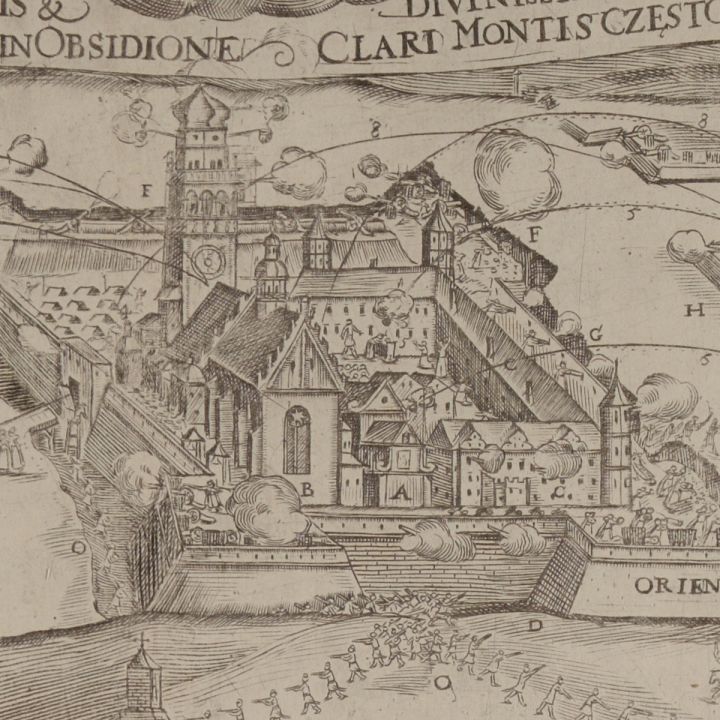L. The Pauline fathers’ monastery / Jasna Góra
Recent research has shown that there were originally brick buildings on Jasna Góra Hill. The discoveries made at the eastern facade of the monastery buildings revealed fragments of the walls of a building erected on solid rock in the 14th century, probably belonging to the defense system created by king Casimir the Great. Most likely, it was a small castle where the monarch stayed while touring the country. After the foundation of Duke Władysław Opolczyk, executed in 1382, a monastery was built on Jasna Góra, which was inhabited by 16 monks of St. Paul of Thebes who were brought from the monastery of Márianosztra (Nostre) in Hungary. The Jasna Góra temple was gradually expanded using old architectural fragments. The chapel meant to hold the miraculous image of the Virgin Mary was built from local limestone shortly after 1382. A Gothic church was erected on the site of the original wooden church. In the years 1425–1430, the temple's chancel was built, situated on a strongly lengthened rectangular plan, closed with a straight wall and covered with Gothic cross-ribbed vaults. In the years 1450–1463, the body of the church was added to the chancel. In the last years of the 16th century, the chapel, church, a detached tower and part of the monastery on the town side were already built. The monastery foundation was not yet fortified. It was not until 1620, during a meeting at Jasna Góra Monastery between King Sigismund III Vasa and an envoy of Emperor Ferdinand II Habsburg, Archduke Charles of Austria, the Bishop of Wrocław, that a decision was made to build the Jasna Góra fortress. It was designed to be one of the defensive points of the western borders of the Republic of Poland. Work began in 1624, probably based on the designs of the Italian military engineer Andrea dell'Aqua, associated with the royal court and Great Crown Hetman Stanisław Koniecpolski. The construction was partly completed in 1639, during the reign of Władysław IV Vasa, who named the fortress officially "Fortalitium Marianum". The most famous siege during the Deluge by the Swedish army, commanded by Burchard Müller von der Lühnen, lasted some 40 days – from November 18 to December 26, 1655. It has to be noted that this small monastic fortress, though modern, tempted the Swedes with the hope of loot from the monastic treasury rather than as a threatening point of resistance. Father Augustyn Kordecki, the prior of the monastery, was the commander of the fortress, and he was accompanied during the siege by Stefan Zamoyski, the swordsman of Sieradz, and Piotr Czarniecki, the older brother of Hetman Stefan Czarniecki. It should be noted that Jasna Góra was one of the few fortresses that managed to defend itself during the Swedish Deluge.

